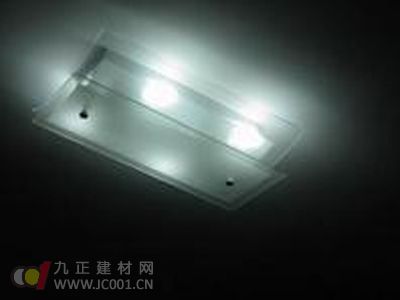Basic Knowledge of Purchasing Lamps:
Purchase Based on Needs
1. The living room is a space where guests are received, so it should create a warm and inviting atmosphere. It’s best to choose a stylish chandelier or ceiling light that adds brightness and elegance. If the room has high ceilings, consider a large circular chandelier or an incandescent one to make the space feel more open. Avoid using only downward-lighting chandeliers, as this can create a stark contrast between the upper and lower areas. Instead, ensure there's some ambient lighting from above for a balanced look. The design and color of the lighting should match the overall decor of the room.
2. For the study, lighting should be bright but not harsh. Incandescent bulbs are often a good choice. A desk lamp with a reflector and a downward-facing light source is ideal for reading and working. Both incandescent and fluorescent lamps are commonly used in such settings.
3. In the bedroom, you can mix different types of lighting to create a soft and cozy ambiance. Decorative lights can add warmth and sophistication to the space.

4. The dining area requires warm and bright lighting to enhance the dining experience. A pendant light directly above the table is ideal. Adding wall sconces near the table can create a more welcoming and intimate atmosphere.
5. In the kitchen, bathroom, and hallway, ceiling lights are typically the best option. These areas require practical lighting, and ceiling fixtures are easier to clean and maintain. Kitchen lights should be easy to wipe down and resistant to moisture and dust. Bathroom lights must be moisture-resistant and rust-proof to ensure long-lasting performance.
Safety First
When choosing a luminaire, safety should always come first. Check the product’s warranty and certification. While the most expensive options aren’t always the best, very cheap lamps may lack quality and pose hidden risks. A fire caused by faulty lighting can have serious consequences. So, how do you ensure a safe purchase?
1. Look for proper electrical protection. Many lighting-related shocks occur due to poor insulation or exposed live parts. Always make sure the bulb is properly installed and that the fixture is designed to prevent accidental contact with live components.
2. Check the wire gauge. High-quality lamps usually use wires with a minimum cross-sectional area of 0.5mm². Some manufacturers use thinner wires (like 0.2mm²) to cut costs, which can lead to overheating and potential short circuits under abnormal conditions.
3. Pay attention to the ballast. If the lamp uses an electronic ballast, choose one with built-in safety features. Inductor ballasts with a higher tw value (such as tw130) are preferable, especially if the lamp doesn’t have good ventilation. The tw value refers to the maximum operating temperature of the ballast coil, ensuring a lifespan of up to 10 years under normal conditions.
Style Matters
The style of your home should guide your lighting choices. The color, shape, and design of the lamps should complement your interior decor and furniture. Flashy or overly complicated lighting may not blend well and could look out of place. While personal preference plays a role in color choice, it’s important to keep the overall aesthetic in mind. Also, consider the size and number of lights based on the room’s dimensions, total area, and ceiling height.
In conclusion, when purchasing lighting, take into account your budget and needs. Choose what suits your lifestyle and space best, without overcomplicating things. Lighting should enhance your environment, not overwhelm it.
Round Bathtub
Round Bathtub
Guangzhou Aijingsi Sanitary Products Co.,Ltd , https://www.infinityedgehottub.com